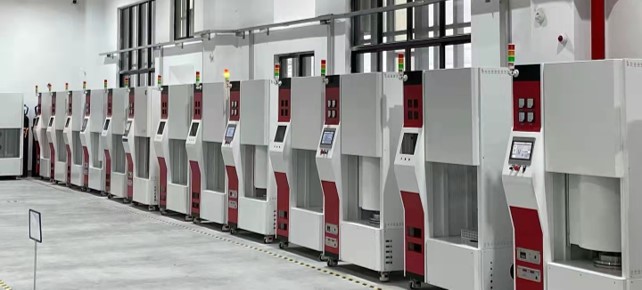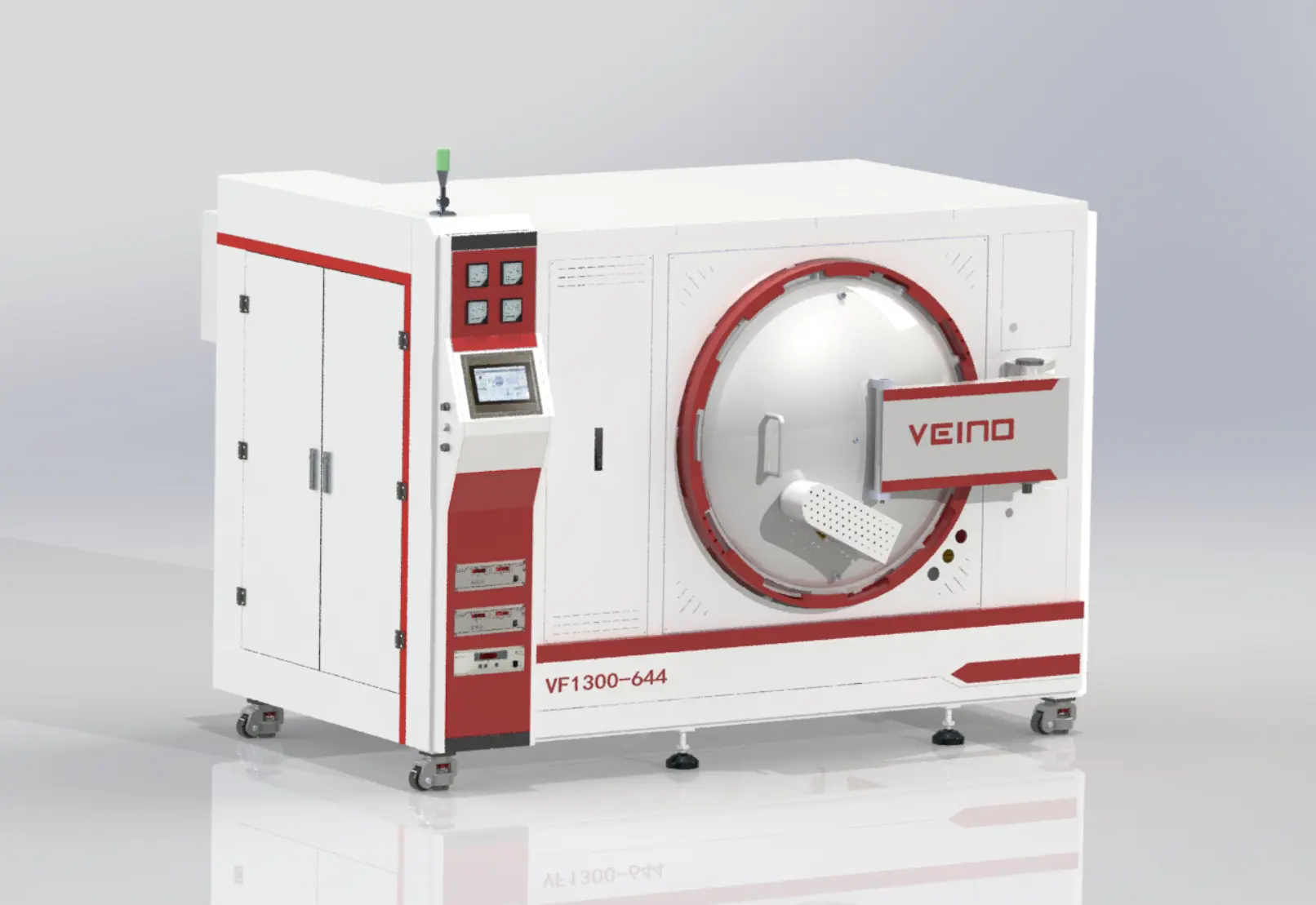What Is the Vacuum Degree of a Vacuum Furnace? | Normantherm
In industries where thermal precision and surface integrity are critical, such as aerospace, medical devices, electronics, and advanced materials, vacuum furnaces are essential. One of the most defining parameters of a vacuum furnace is its vacuum degree, also referred to as vacuum level or ultimate vacuum.
The degree of vacuum in which a vacuum heat treatment processes is operated depending on the performance, reliability and quality produced. This article describes the meaning of a vacuum degree, its measurement, its importance and what the user owning a vacuum furnace of the normanthem needs to be aware of when ordering or servicing that furnace.
What Is a Vacuum Degree in a Vacuum Furnace?
Vacuum degree means the level of pressure in the furnace chamber, which is normally given in terms of Pascal (Pa), Torr or mbar. It shows the amount of air or gas that has been extracted out of the furnace in order to establish a low pressure environment which is fundamental to curb oxidation, contamination, and other undesired reactions in thermal processing.
In short, The greater the vacuum degree is, the lesser the pressure is. The degree of high vacuum implies fewer residual gases leading to cleaner heat treatment as well as minimum surface oxidation and the best metallurgical properties.
Common Units of Measurement
Vacuum levels are quantified using different units depending on region and application:
● Pascal (Pa)
● Torr (1 Torr = 133.3 Pa)
● Millibar (mbar)
● Microns (used in deep vacuum applications; 1 micron = 0.001 Torr)
Below is a classification of vacuum ranges:
| Vacuum Range | Pressure in Pa | Description |
| Atmospheric | ~101,325 Pa | Normal ambient pressure |
| Low Vacuum | 3,000 – 100,000 Pa | Rough vacuum |
| Medium Vacuum | 0.1 – 3,000 Pa | Partial vacuum |
| High Vacuum | 10⁻⁵ – 0.1 Pa | Common in brazing furnaces |
| Ultra-High Vacuum | < 10⁻⁵ Pa | Specialized applications |
Normantherm’s vacuum furnaces are engineered to operate within high vacuum ranges, ensuring consistent results for advanced industrial needs.
Why Vacuum Degree Matters in Heat Treatment
1. Oxidation Control
Many metals oxidize rapidly at high temperatures in the presence of oxygen. High vacuum conditions prevent this, allowing clean surface finishes and metallurgically sound components.
2. Improved Surface Quality
In vacuum brazing or sintering, maintaining a clean environment is vital for strong, contamination-free joints, especially in electronics, aerospace, and medical devices.
3. Enhanced Process Stability
Controlling the vacuum level helps achieve uniform heat transfer, consistent thermal cycles, and improved repeatability in batch production.
4. Elimination of Chemical Reactions
Vacuum heat treatment eliminates unwanted gas-metal reactions, such as decarburization, hydrogen embrittlement, or nitriding, which degrade mechanical properties.
How Is Vacuum Degree Achieved in Furnaces?
To reach and maintain a precise vacuum level, several system components and engineering controls are required:
1. Vacuum Pumps
● Rotary or Scroll Pumps: Used for initial evacuation (roughing stage)
● Roots Blowers: Increases evacuation speed and bridges pressure ranges
● Diffusion or Turbomolecular Pumps: Necessary for achieving high and ultra-high vacuum levels
Normantherm vacuum furnace systems are integrated with multi-stage vacuum pump assemblies that ensure stable evacuation across process requirements.
2. Vacuum Sealing System
All joints, doors, and valves must be leak-proof. High-temperature O-rings, metal gaskets, and helium-tested welds are used to ensure long-term integrity
3. Gas Management
In processes like partial pressure brazing, gases such as argon or nitrogen may be introduced after vacuum evacuation. This requires flow control valves, gas purging systems, and pressure regulators for safe operation.
Typical Vacuum Levels in Normantherm Furnaces
Normantherm furnaces are customized based on your industry and process. Here’s a guide to typical vacuum degrees across our product range:
| Furnace Type | Typical Vacuum Level |
| Vacuum Brazing Furnace | 5.0 × 10⁻⁴ Pa or better |
| Vacuum Annealing Furnace | ~10⁻² to 10⁻³ Pa |
| Vacuum Sintering Furnace | Below 10⁻⁴ Pa |
| Vacuum Tube Furnace Series | 10⁻³ to 10⁻⁵ Pa (adjustable) |
Each model is equipped with digital vacuum monitoring, PLC control, and real-time data logging.
Industry Applications Based on Vacuum Requirements
Different industries require specific vacuum degrees to meet performance, regulatory, or product reliability standards.
1. Aerospace Industry
Components like turbine blades, fuel nozzles, and aerospace brackets require high vacuum brazing to prevent oxidation and ensure mechanical integrity.
2. Electronics and Semiconductors
Microelectronic packaging, power semiconductors, and sputtering targets require ultra-clean processing conditions, often below 10⁻⁴ Pa.
3. Medical Devices
Implants and surgical tools benefit from vacuum heat treatment for enhanced cleanliness, corrosion resistance, and biocompatibility.
4. Tool and Die Manufacturing
Heat-treated tools must maintain dimensional accuracy and surface hardness—achievable through vacuum hardening at medium to high vacuum levels.
5. 3D Printing and Additive Manufacturing
Post-processing of printed metal parts via vacuum sintering or annealing ensures density, strength, and microstructural uniformity.
Factors That Influence Vacuum Degree
● Chamber Leaks: Even micro-leaks can degrade vacuum levels. All sealing surfaces must be routinely checked and maintained.
● Outgassing: Moisture or oil residue from samples or fixturing materials can release gases under heat. Pre-cleaning and bake-out cycles are essential.
● Pump Efficiency: Vacuum pumps need periodic oil changes, seal checks, and maintenance. A worn-out pump will reduce attainable vacuum degree.
● Load Material: Materials that contain lubricants or coatings may contaminate the chamber and affect vacuum quality.
Monitoring and Controlling Vacuum Degree
Effective control depends on:
● High-accuracy vacuum gauges (Pirani, cold cathode, or ion gauges)
● Data acquisition systems to log performance trends
● Automated alarms for vacuum loss, power failure, or system breaches
Normantherm furnaces feature integrated digital interfaces for monitoring vacuum levels in real time and adjusting pump sequences automatically.
Conclusion
The vacuum degree of a furnace is not just a technical specification as it directly influences product quality, process consistency, and operational safety. Whether you're brazing turbine blades, sintering advanced ceramics, or annealing semiconductor parts, maintaining the right vacuum level is essential.
Normantherm will provide vacuum furnace systems that offer precision, repeat ability and reliability with atmospheres that will fit your particular industry requirements.
We offer comprehensive engineering support, customization options, and after-sales service to help your business achieve optimal performance in heat treatment and material processing.
You may also like

The Future of 3D Printing in Heat Treatment: How Normantherm is Leading the Way.

Vacuum Brazing Technology: The Key to Stronger and More Durable Joints.

